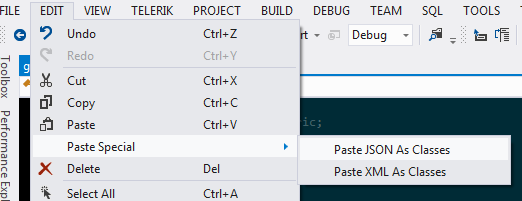Posts tagged with 'tools'
Since I'm a professional blogger now, I decided that I need to use a tool with a bit more functionality than a standard TinyMCE or CKEditor box.
I decided that Markdown was the way to go, so I installed MarkdownPad 2 (choco install markdownpad2). This worked fine for a bit, but there are a couple of issues:
- In order to embed images and preview them, I had to actually put them on a public dropbox folder and use the public dropbox URLs
- Embedding code is just a copy and paste. I can't reference another file and import the code. This means I have to manually update my md file whenever I tweak code samples.
- I had to install Awesomium in order to use MarkdownPad 2's preview feature (why?!)
THERE ARE PROBABLY SOLUTIONS to these gripes.
But what I've found is that I like the AsciiDoc format as much as Markdown, and I like AsciiDocFX way better than MarkdownPad 2.
Embed images
In markdown, what I did was put images into a public dropbox folder, and link to the public URLs. This felt darn hacky, but I couldn't figure out how to get it to point to local files (at least not in MarkdownPad 2).
With Asciidoc, I simply specify a local folder with a metadata tag: :imagesdir: images - and that tells AsciidocFX to look for images in that subfolder.
To include an image then, I just use image::filename.png[alt text goes here]. And that does it.
Import code from source files
This is a great feature that I wish I had when I was writing my book. To include a source code file right in your document, just use include::path/to/sourcecode.cs.
That will include the entire file in your document. If you just want part of a file, you can add a comment with "tags" in it. In C#, for example:
// tag::Example1[]
public void MyCode() {
}
// end::Example1[]
And then, back in AsciiDoc, use include::path/to/sourcecode.cs[tags=Example1]. Now only the code that sits between those comments will appear in the document.
This is such a great feature, because I'm always tweaking code up until the last minute before I publish. Now I don't have to worry about the blog post getting out of sync with the actual code!
Awesomium
Not needed for AsciiDocFX. So, even if you decide to stay with Markdown, AsciiDocFX still seems like the superior tool to me.
Conclusion
I'm sure there is much more to learn about AsciiDocFX and Markdown, but I'm pretty convinced at this point. I'm going to start using AsciiDocFX for blogging (and, heaven forbid, if I write another book).
I've been working a little bit here and there on a mobile app. One thing this app does a lot is use a RESTful API over HTTP, where the results are JSON.
I'm using RestSharp to handle these requests, and RestSharp can automatically serialize Json results into C# object(s), assuming I have C# objects that match.
Well, some of these JSON results can be a little complex. Not terribly complex, mind you, but enough to where it's annoying to create the classes myself. But I thought to myself, maybe there's a tool out there that already does this for me. I googled around and found json2csharp, which is a handy web app that does exactly that.
Well, thanks to Rob Gibbens, I now know that this feature is actually built-in to Visual Studio 2013, and available for 2012 as part of "ASP.NET and Web Tools".

You can see that there are some differences, but these tools get you most of the way there!
